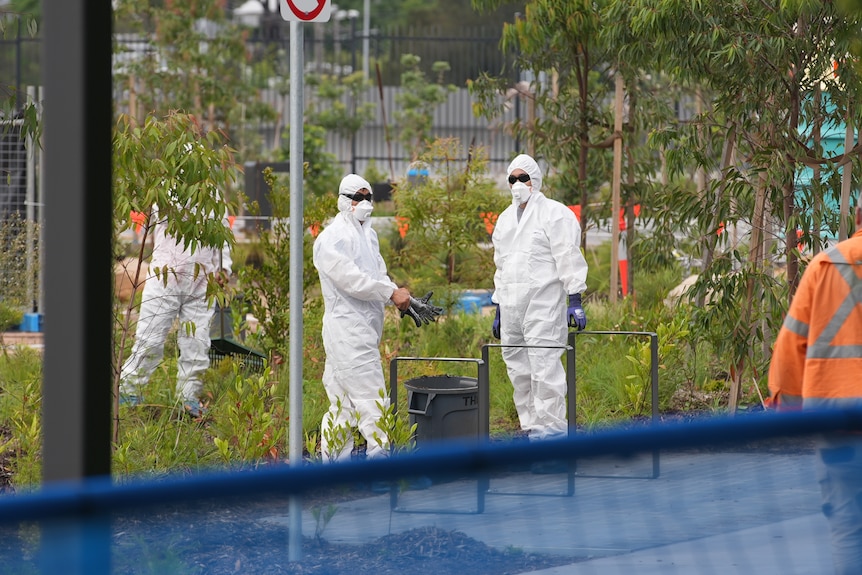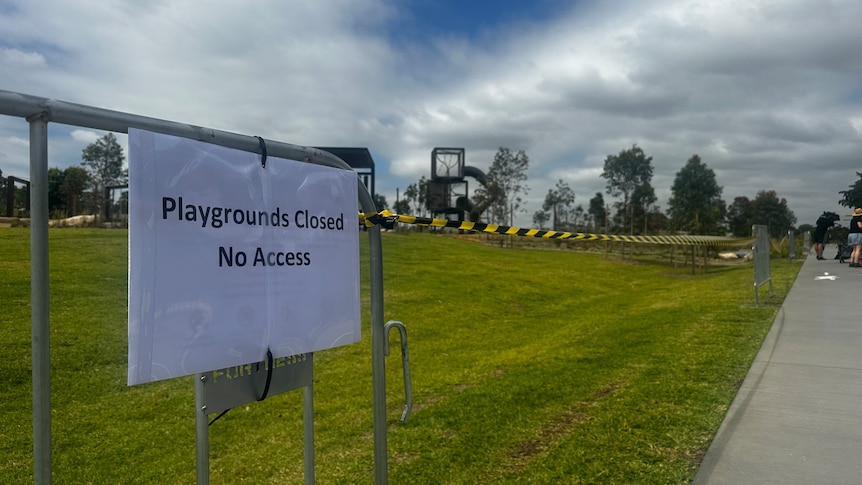The largest investigation ever conducted by the environmental regulator in New South Wales is currently underway, focusing on the safety of landscaping products. The primary objective of this extensive inquiry is to uncover the source of asbestos contamination in mulch found at numerous sites throughout Greater Sydney. This critical investigation was prompted by the discovery of bonded asbestos in a Sydney park, which was later taken home by a child, sparking a significant public safety concern. Consequently, the repercussions of this asbestos debacle have been far-reaching, resulting in the closure of schools, the cancellation of the highly anticipated Mardi Gras Fair Day, and prompting the government to conduct testing on hundreds of public parks and recreational areas to ensure public safety.

The cancellation of Mardi Gras Fair Day occurred due to the discovery of asbestos at the designated park. An investigation is underway to determine if residential gardens have also been affected. Currently, 32 locations, including Campbelltown Hospital premises, have tested positive for asbestos. Precautionary measures are being taken at various schools as well. This situation has raised concerns about the need for stricter regulations in the landscaping products safety sector. Many questions remain unanswered regarding the spotlight on the asbestos debacle and how it transpired.
The Origin of the Landscaping Products Safety Concern
The source of the asbestos debacle surrounding landscaping products remains a mystery.
An investigation led by the NSW Environment Protection Agency (EPA) is actively seeking to trace the point in the supply chain where the mulch became contaminated with asbestos.
Tony Chappel, the CEO of the EPA, disclosed that the tainted mulch discovered so far can be traced back to the same supplier, the Greenlife Resource Recovery Facility.
Despite this revelation, the company stands by its claim that the mulch leaving its premises was devoid of asbestos.
In a formal statement, Greenlife Resource Recovery Facility asserted its adherence to quality and compliance standards set by the EPA. The company is currently challenging a legal notice that prohibits the distribution of its products.
According to the statement, “Greenlife [Resource Recovery Facility] is confident that the mulch leaving our facility is uncontaminated by asbestos.”
The statement further noted, “Many of the sites receiving the mulch are previously remediated sites, indicating that asbestos was buried there decades ago.”
The company emphasizes that it lacks oversight and control over how its products are utilized once they reach the construction site.

In Greater Sydney, twenty-four locations have confirmed the presence of bonded asbestos, as reported by ABC News’ Quentin Theron. A dedicated task force has been established to coordinate various government entities and prioritize sites deemed most hazardous to the public. This initiative aims to ensure the availability of all necessary resources for the securement and remediation of these sites. Mr. Chappel expressed his desire for a prompt and thorough resolution to the situation.
Understanding Landscaping Products Safety Regulations
Producers and suppliers of recycled mulch undergo compliance audits by the EPA. These audits may involve surprise inspections at resource recovery facilities and requests for test results.
Businesses are required to adhere to a set of regulations established by the regulatory body. These regulations stipulate that mulch should be free from asbestos, engineered wood products, and physical contaminants like glass, metal, or rigid plastics.
Furthermore, processors are prohibited from distributing mulch that contains weeds, diseases, or pests, ensuring the safety and quality of landscaping products in the spotlight of the asbestos debacle.

Advocating for Stronger Checks in Landscaping Products Safety
The call for enhanced checks in landscaping products safety comes from David Moir, the NSW president of the Australian Institute of Landscape Architects. Moir suggests that landscape architects should have access to test results before using mulch, ensuring its quality and safety.
Moir emphasizes the importance of the landscape project architect’s involvement throughout the construction process. Regular inspections at specific points are crucial to verify the materials, including mulch, meet the required standards.
Questioning the potential influence of project deadlines, Moir highlights instances where mulch is hurriedly installed, sometimes even sourced from multiple suppliers to meet project demands.
Recent incidents of contaminated mulch in various parks have raised concerns. Environment Minister Penny Sharpe attributes this issue to a “regulatory failure” and pledges to explore stricter regulations and increased penalties to prevent such incidents in the future.
Discovering the Amount of Asbestos Found in Each Site
Uncovering the Risk of Asbestos in Landscaping Products Safety
Asbestos contamination in mulch has recently come to light in various areas of Sydney, particularly in the inner west and western suburbs. The initial detection of this hazardous material was in Rozelle Parklands, sparking concerns about the safety of landscaping products.
The asbestos debacle has put a spotlight on the potential dangers associated with using contaminated mulch in landscaping projects. It is crucial for residents and contractors alike to be aware of the risks involved and take necessary precautions to prevent exposure to this harmful substance.

**Identifying Asbestos in the Environment**
In the realm of landscaping products safety, the presence of asbestos is a significant concern. An expert highlighted that asbestos can typically be recognized in an environment. The process involves conducting a thorough walk-through of the site to visually pinpoint materials suspected of containing asbestos. These materials are then carefully selected and analyzed in the lab to determine their asbestos content.
According to the expert, asbestos is a constant presence in the environment. Therefore, regulations should prioritize assessing the risk it poses to public health. The expert emphasized the need for regulations to be centered around measuring the potential health risks associated with asbestos exposure.
The expert further explained that as long as building or recycled materials with asbestos potential are used, there will always be a risk of asbestos contamination. To mitigate this risk, the expert suggested that testing the materials used in mulch should occur before they are introduced to the resource facility. This proactive approach could help prevent the inadvertent spread of contaminated mulch in sensitive areas like schools.
In conclusion, the expert’s insights shed light on the importance of proactive measures to address the asbestos debacle and ensure the safety of landscaping products. By focusing on early detection and prevention, the spotlight can be shifted towards safeguarding public health from potential asbestos exposure.



